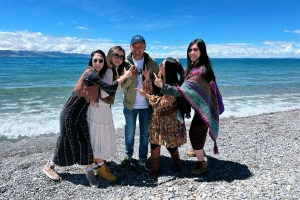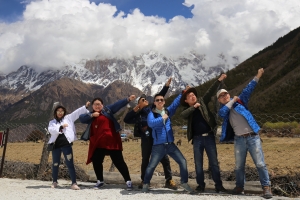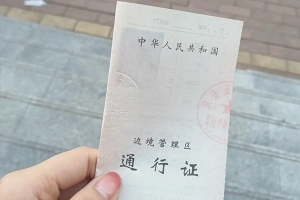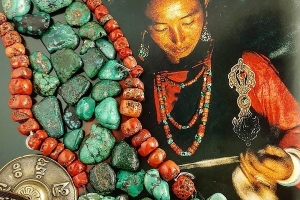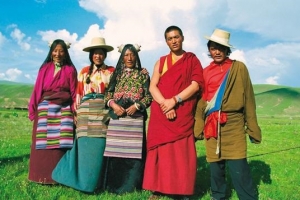In the heart of Tibetan culture lies a centuries-old tradition deeply intertwined with the teachings of Buddhism—the wearing of the Kasaya, a monastic robe that is both a symbol of devotion and a visible marker of spiritual identity. When one pictures Tibetan Buddhism, the vivid image of deep red robes immediately comes to mind. These robes, worn by both monks and nuns, carry a significance that transcends mere attire. They encapsulate a history stretching back over 2,500 years to the time of Siddhartha Gautama, who later became known as the Buddha. In Tibetan society, where every element of daily life is steeped in ancient religious practice, the Kasaya represents not only a functional garment but also a sacred tradition that connects present-day practitioners with their storied past.
Historical Origins of the Monastic Robe
The tradition of donning a monastic robe dates back almost 2,500 years to the era of the Buddha. According to historical accounts, when the Buddha renounced his luxurious life in search of enlightenment, he chose a path of ascetic simplicity. The robes he and his earliest disciples wore, known as civara in ancient Pali and Sanskrit texts, were often patched together from available cloth. These humble beginnings underscore a powerful message: spiritual progress is not dependent on material wealth or ornate garb but on inner transformation and simplicity.
In the earliest days of Buddhism, the monastic robe was not defined by a singular color; rather, it was characterized by its simplicity and modesty. The robe, which came to be called “Kasaya” (a word with origins in Sanskrit), originally denoted a utilitarian garment made from discarded cloth. This very origin story reflects an acceptance and elevation of what society might typically cast aside, giving it new meaning in the spiritual realm.
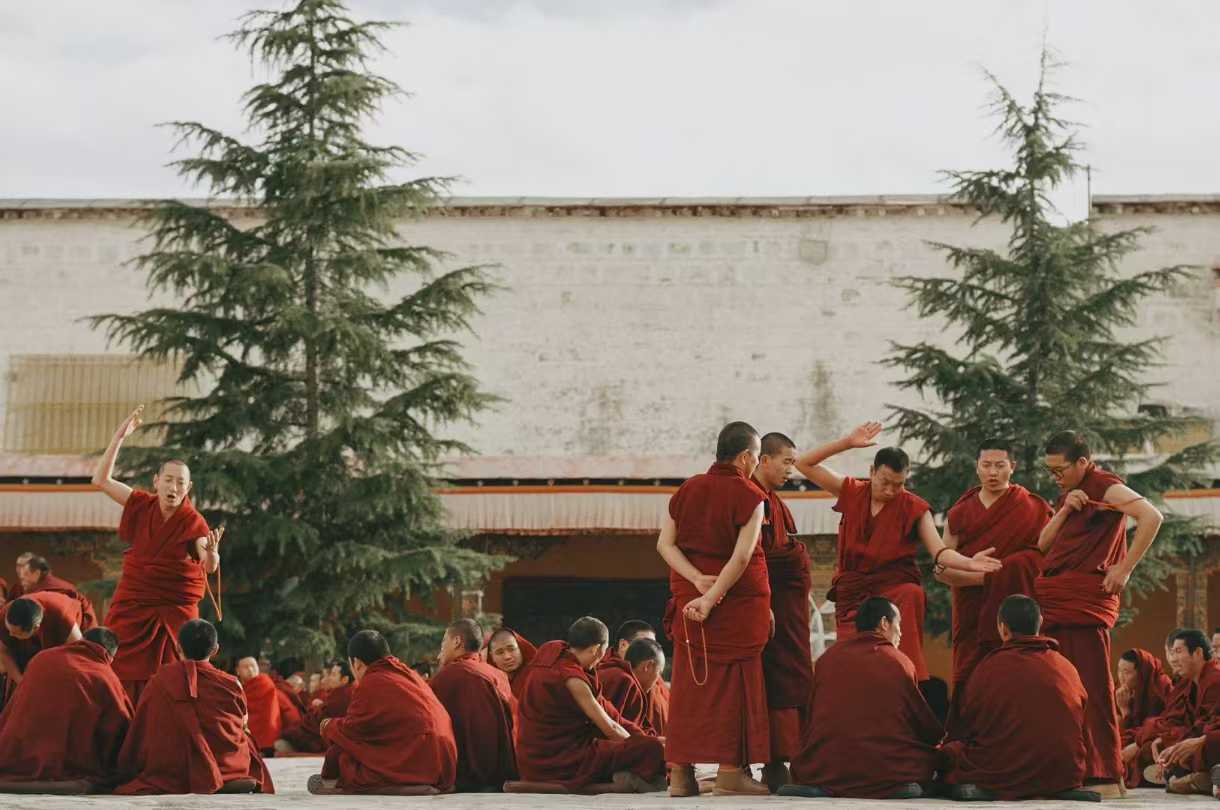
The Literal Meaning and Evolution of Kasaya
The term kasaya itself is laden with symbolic meaning. Derived from Sanskrit, it originally carried connotations of impurity or a variegated nature. Despite what might initially seem like a negative implication, this symbolic meaning aligns with the early Buddhist teaching of renouncing worldly attachments—including those to refined or “pure” materials.
Historically, the original color of the kasaya was a shade of yellow. Yellow held a special place within the early Buddhist tradition due to its association with the Buddha Sakyamuni. After leaving behind his princely life, the Buddha chose to wear humble garments made from discarded white shrouds, which, over time, took on a yellowish hue due to sun and rain exposure. This natural transition in color was reflective of an inherent respect for simplicity and the acceptance of life’s inevitable imperfections.
However, as Buddhism spread beyond its Indian origins, regional adaptations began to shape the visual and cultural aspects of monastic life. When Buddhism made its journey to Tibet in the seventh century, the iconic robe underwent a dramatic transformation. The red kasaya—today an indelible symbol of Tibetan Buddhism—was born out of the interplay between cultural exchange and the unique artistic traditions of the region.
The Shift to the Deep Red Robe in Tibet
The transformation from the original yellow robe to the now ubiquitous deep red kasaya in Tibet was not arbitrary. It was influenced by multiple historical and cultural factors. When Tibetan monks began adopting Buddhism, they were in contact with Indian teachers and artisans who brought with them the traditions of the civil monastic robe. At the same time, the local Bon religion, which predated the spread of Buddhism in Tibet, held red as a color of high esteem and spiritual power.
As economic and cultural interactions with the Han dynasty in China increased, it was important to mark the newly adopted Buddhist practice with a distinctive identity. In order to avoid the color association with the yellow robes favored by the imperial court, Tibetan Buddhism opted for a deep red hue. This decision was significant—it allowed the Buddhist community in Tibet to preserve its own unique identity while honoring the simplicity and humility that defined the original Buddhist practice.
Garment Construction and Wearing Rituals
In Tibetan monastic life, the kasaya is not a monolithic garment but consists of several carefully designed pieces. Each component is both functional and symbolic, reflecting the wearer’s rank, role, and the customs of the tradition. Typically, Tibetan monks assemble a five-piece suit for everyday wear. This ensemble may include:
- Sleeveless Garments and Large Shawls: These are commonly worn during outdoor activities, providing both comfort and a sense of unity among the practitioners.
- Pleated Skirts: Crafted from materials like yark wool—a fabric known for its durability—these skirts are often handcrafted and reflect the artisanal skill of Tibetan communities.
- Traditional Monk Shoes: Made from Menyog and felt placed under the skirts, these shoes exemplify the balance between tradition and practicality.
- Formal Ceremonial Attire: On special occasions, monks and nuns will complement their everyday robes with additional garments such as the Cho-go or Nam-jar, which, while yellow in appearance, are worn to denote respect and formality in rituals.
When wearing the kasaya, the manner in which it is draped is significant. The robe is typically wrapped around the body with the right shoulder exposed—a style that has remained remarkably consistent across different ranks and occasions. This uniformity of style underscores the deep communal and spiritual bonds shared among the members of the sangha—the Buddhist monastic community.
Variations Across Tibetan Buddhist Denominations
Despite the uniform ritual of wearing the kasaya, Tibetan Buddhism comprises several denominations that observe slight variations in their attire. The four principal schools—Gelug, Nyingma, Kagyu, and Sakya—all share the tradition of the red robe, yet they differ in other details such as the style of hats or additional ornamental accessories. These subtle distinctions serve to denote lineage and rank within the broader community and illustrate the diverse historical evolution of Tibetan monastic practices.
Within the broader category of Tibetan Buddhist robes, several distinct garments are noteworthy:
- Shemdap: This is a maroon skirt created by patching together various pieces of cloth, symbolizing the humble origins of the robe.
- Dhonka: A wrap-around shirt with cape sleeves, which provides both ease and ceremonial importance.
- Chogyu: Often compared to the Sanghati, this yellow outer garment is worn on formal occasions and adds another layer to the ritual dress code.
- Namjar: Typically larger and more elaborately patched than the Chogyu, the Namjar is reserved for key ceremonial functions.
- Zhen: A more everyday version of the robe, usually maroon in color, that symbolizes the continuing lineage of the early Buddhist tradition.
The Spiritual and Cultural Significance
The kasaya is more than just a piece of clothing; it is a living tradition, a symbol of renunciation, and an emblem of commitment to the Buddhist path. The choice of fabric and color is laden with meaning and echoes the Buddha’s original teachings. Every time one of these deep red robes is observed in a monastery or during religious ceremonies, it is a reminder of the Buddha’s profound renunciation of worldly attachments and his dedication to spiritual enlightenment.
For Tibetan Buddhist monks and nuns, the act of donning a kasaya every day is a constant reaffirmation of their vows and an outward expression of their inner discipline. Even as the design and construction of these robes have evolved over the centuries, the underlying message has remained the same: humility, simplicity, and a commitment to the spiritual path.
Kasaya – the Symbol of Tibetan Buddhism
Today, the kasaya stands as a powerful symbol of Tibetan Buddhism, uniting monks and nuns across generations. With origins dating back to the ancient practices of the Buddha and subsequent adaptations influenced by regional traditions, the kasaya reflects the deep spiritual heritage and evolving cultural identity of Tibet. The transformation from a simple yellow garment to a striking deep red robe encapsulates the journey of Buddhism from its Indian roots to its distinct expression in Tibetan culture.
Whether worn during daily monastic routines, religious processions, or formal ceremonies, the kasaya remains a vivid marker of spiritual resilience and continuity. Its evolution over 2,500 years is a testament to the enduring power of simplicity and the universal quest for enlightenment—a quest that continues to inspire and transform lives in Tibet and beyond.
Through its fabric and color, the Tibetan Buddhist kasaya does more than just clothe the body. It clothes the spirit in a rich tapestry of history, artistry, and unwavering devotion—a tradition that remains as alive and vibrant as ever in the contemporary religious landscape.



